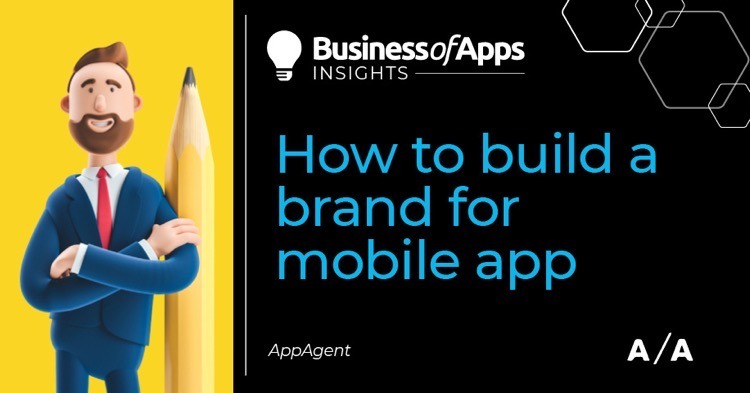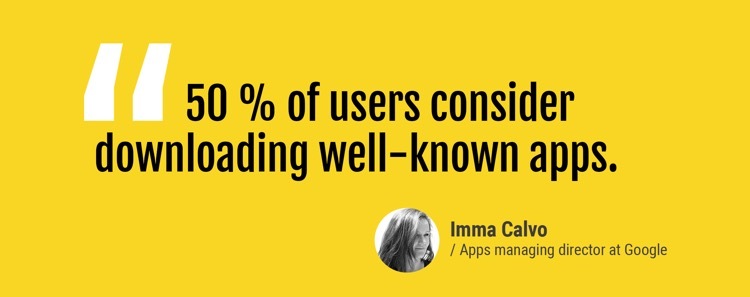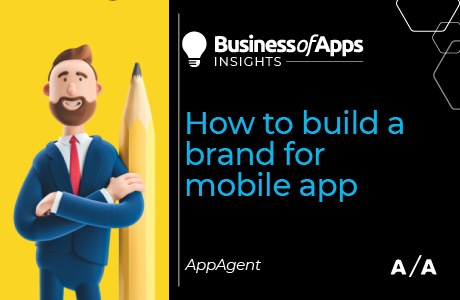What you will learn in this article:
- What a brand actually means in the world of mobile and why it matters
- How to define your app or games own brand
- How to reflect a brand in your communication strategy (practical example)
In June 2020, there were 4.37 million apps in the Apple App Store, with thousands more added every day. A brand serves as a lighthouse in the myriad of choices, making it easier for users to navigate through the thousands of options. A brand promises that the product will deliver what’s expected–functionally and performance, privacy and security.
We can class well-known apps as brands. Sometimes they are built organically, but in most cases, those apps are engineered by founders, product managers, or marketers to become established as the number one choice in people’s minds.
For publishers, the brand amplifies all marketing efforts and increases the reach of mobile apps or games.
Gessica Bicego, Senior Director of Growth at Blinkist, said in a Clubhouse discussion on brand vs. performance: “We realized the limitations of performance marketing at Blinkist about two years ago. Unfortunately, it was quite late for us to start building the brand, so we could have easily expanded further without hitting the plateau first. Since then, we have pursued brand building with the same importance as other direct-response activities.”
Mobile app branding
But what is a great mobile brand, and how does it influence customer behavior?
Let’s say you’re looking for a way to reduce the stress accumulated by WFH with your kids. An app companion seems like a good starting point, so you look for “stress relief” in the App Store.
Calm appears at the top of search results and looks nice, but the colors leave you feeling cold. TeasEar in the second spot doesn’t ring a bell. But in third, there’s Headspace!
You’ve seen those cute illustrations before, and “meditation made simple” sounds perfect for a starter like you. They’ve partnered with Netflix, so it must be a good app, right?
So, you hit the download button.
This classic user journey is the result of 10 years of work. During the last decade, Headspace has been laser-focused on its goal to make meditation accessible and frictionless for newcomers.
That’s reflected in its clear messaging, unique and friendly visual style, and partnerships with other brands such as Netflix that elevate brand perception.
Download our MMP Buyers Guide
Having a trusted partner for accurate, unbiased, indisputable data and real-time insights is no longer a nice-to-have, it’s a must-have. Download our guide to help choose your next MMP provider.
DOWNLOADIs building a mobile brand necessary?
We can all name memorable mobile brands such as Youtube, Angry Birds, and Headspace, but how do you get your brand to such a position, and how should you start?
On the recent webinar on ASO trends in 2021, our group of panelists was confronted with the reality that not every company has the budget to build a brand like Angry Birds.
Sylvain Gauchet, growth manager at Babbel and author of Growth Gems, responded intelligently: “Even if you don’t invest into brand awareness campaigns, you are building a brand anyway.”
The way you design the product, its store page, and your adverts define the brand. Coupled with direct communication through social media, it helps to establish a visual and written identity. Your media budget only amplifies brand-building activities.
Claire Rozain, UA manager at Gameloft, adds her observation: “When you have a strong brand, it helps recognition, and by mechanics, it decreases your CPI. A TV campaign that helps to decrease your CPI is a good example of this”.
It’s crucial that you understand who you are as a brand and where you are heading.
How to design your own mobile brand
There are three layers to brand-building:
- Core: Unique selling proposition (USP), key messages, tone of voice and brand language.
- Story: Brand story and key characters such as founders, ambassadors or heroes.
- Activities: Awareness building activity through YouTube series, merchandising, sponsorships, etc.
Brand core
To be successful, each business must have clarity on three things for each branch:
- what the purpose of your business is;
- who your customers are; and
- how you want to be perceived on the market.
To help our clients define these core components of their brand, we developed a Minimum Viable Brand framework at AppAgent.
In a workshop, we work together to uncover the answers to these fundamental questions and compile visual references to help the design team create a visual identity.
Some of the questions we ask include:
- How does your app solve an existing problem?
- In which areas of your business are you 10x better than competitors?
- Who is your current user, and who is the ideal paying customer?
- What motivates a customer to use your product or service?
- Is your tone of voice rather formal x friendly, deep x humorous, high-tech x traditional…?
- Here’s an example of how we have defined the tone of voice for a brand:
For visual guidance, a mood board helps the design team to take a clear direction.
You can see an example of this that we created for a fast-growing social media app called Clapper:
The answers to these questions and visual references are synthesized to create your unique selling proposition, key messages, language style, and critical visual identity.
The goal of the MVB framework isn’t to create a 1000-page brand bible for every potential situation. Instead, it’s a rather practical and relatively simple set of basic building blocks that are easy to understand for every copywriter, art director, and marketer.
Naturally, over time your needs will change and become more sophisticated, so you’ll need to add greater detail or meat on the bones.
Brand story
Once you have the brand core in place and your business grows, you will naturally begin to consider making your brand more attractive. Most successful brands are built around a story that contains a more profound purpose that explains why the business exists. Such stories often have strong emotions and inspire others to action. (You can learn more about this in Simon Sinek’s influential book “Start with Why”.)
It’s easier to illustrate this using some examples. The brand story could revolve around the founder (Daniel Ek and Spotify revolution in music distribution), the product’s origins (Kevin Systom’s a-ha moment on vacation in France leading to Instagram), historical moments (Angry Birds being the studio’s 52nd produced game), or key characters (Barbarian for Clash of Clans or Kayla Itsines in Sweat).
When working for Finimize, a London-based fin-tech app providing financial news in context to Genz Z, the creative team at AppAgent used the founder’s story as the basis for the brand’s identity. Using a familiar “Tiktok” style, the film tracked the evolution of the brand. It used jargon-free language and a voiceover recorded by the founder, interspersed with humorous clips to lighten the tone.
Finimize – video ad “Max With Jokes”
Brand activities
Brand activities are specific marketing efforts towards building awareness. It’s only at this, the final layer of brand building, where budget starts to play a role.
Here are two extreme examples to illustrate the point. You can build your brand through relatively cheap community events (as Finimize has done) or expensive feature films (Angry Birds).
Smaller businesses should focus on low-cost tactics to build their brands, such as blogging, YouTube videos, and live streaming. Bigger enterprises with larger budgets can make bolder moves, such as investing in TV ads (Clash of Clans on Super bowl) or organizing large tournaments (Clash Royale League World Finals).
We recommend starting with easy-to-measure activities that are ideally one-tap-away. Chasing an exploited addressable market or having access to big budgets could encourage you to take more risks and invest in mass-market channels with little control.
Mobile app branding examples
Here are ten examples that demonstrate excellent approaches on how to build a mobile app brand. These examples don’t just include strong visual brand identity; they all have precise positioning, consistent communication, and utilize emotions to establish a deeper connection with users.
Non-gaming
Gaming
Closing remarks
Externally, the importance of brand in mobile has grown considerably. As the industry matures and app stores become more crowded, having a recognizable brand is more important than ever.
Internally, creating a solid brand foundation that codified into a document will help align the team when creating all communications materials and visuals. This can save considerable time and back and forth between team members, especially as the organization grows.
Begin by defining the brand essentials and later develop a deeper story that expresses its purpose. Invest into brand campaigns only once you master performance channels––but before you hit a glass ceiling.
Think of your brand as a set of communication rules. But be sure to leave space for experimentation, testing the form, and finding what style and execution are most effective at converting users. If your brand guidelines are too narrow, they can harm the performance of your marketing activities.
Building a powerful brand takes time and requires consistency. With new trends and new communication platforms such as TikTok and Clubhouse gaining popularity, your style might need to adjust, but it must remain faithful to the principal values over decades.




















